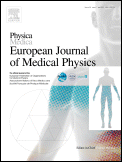
Physica Medica-European Journal of Medical Physics
Scope & Guideline
Connecting Ideas, Inspiring Advancements in Medical Physics
Introduction
Aims and Scopes
- Radiation Therapy and Dosimetry:
Research on the dosimetric aspects of radiation therapy, including the development and validation of treatment planning systems, optimization of dose delivery, and assessment of treatment outcomes. - Medical Imaging Technologies:
Exploration of advanced imaging techniques, such as MRI, CT, and PET, focusing on improving image quality, diagnostic accuracy, and radiation safety. - Artificial Intelligence in Medical Physics:
Integration of machine learning and artificial intelligence to enhance medical imaging, treatment planning, and patient management, highlighting innovative applications and methodologies. - Clinical Applications and Patient Safety:
Studies aimed at improving clinical practices, patient safety, and quality assurance in medical physics, including the evaluation of radiation exposure and the development of safety protocols. - Monte Carlo Simulations and Theoretical Models:
Utilization of Monte Carlo methods and theoretical modeling to understand radiation interactions, optimize treatment plans, and predict outcomes in various therapeutic contexts.
Trending and Emerging
- Deep Learning and AI Applications:
The incorporation of deep learning and artificial intelligence techniques in medical imaging and treatment planning is rapidly increasing, showcasing the potential for improved accuracy and efficiency in clinical workflows. - Personalized Medicine and Patient-Specific Approaches:
There is a growing focus on personalized medicine, with research emphasizing tailored treatment plans and individualized dosimetry to optimize patient outcomes. - Radiomics and Image Analysis:
The exploration of radiomics—extracting large amounts of quantitative features from medical images—is emerging as a significant area of interest, particularly for predicting treatment responses and outcomes. - Real-Time Imaging and Motion Management:
Developments in real-time imaging techniques and motion management strategies are gaining traction, highlighting the need for precision in radiation therapy amidst patient movement. - Integration of Multimodal Imaging Techniques:
Research is increasingly focusing on the integration of multiple imaging modalities to improve diagnostic capabilities and treatment planning, reflecting a trend towards comprehensive patient assessment.
Declining or Waning
- Traditional Dosimetry Methods:
There appears to be a declining emphasis on conventional dosimetry techniques in favor of more advanced methodologies, such as Monte Carlo simulations and AI-based approaches that offer greater precision and efficiency. - Basic Radiation Physics Education:
The focus on fundamental radiation physics education seems to be decreasing, as the journal increasingly prioritizes applied research and technological advancements that directly impact clinical practice. - General Medical Physics Practices:
As the field evolves towards specialization, there is less emphasis on general medical physics practices, with more publications focusing on niche areas such as specific treatment modalities or advanced imaging technologies.
Similar Journals
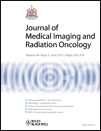
Journal of Medical Imaging and Radiation Oncology
Innovating Imaging Techniques for a Healthier TomorrowJournal of Medical Imaging and Radiation Oncology, published by WILEY, is a pivotal resource in the fields of oncology and medical imaging. With an impact factor reflective of its commitment to advancing research, the journal has maintained a robust reputation since its inception in 2008 and continues to thrive through 2024. It is indexed with an insightful ranking, with a Q2 classification in Radiology, Nuclear Medicine and Imaging, affirming its importance in these disciplines. This journal not only serves as an open access platform, allowing extensive reach and accessibility, but also fosters a scholarly community dedicated to the innovation of imaging techniques and radiation oncology practices. As a key player in disseminating crucial findings and advancements, it appeals to researchers, clinicians, and students who aim to contribute to the evolving landscape of medical imaging and cancer treatment methodologies. The journal is based in Australia, at 111 River St, Hoboken, NJ, and invites submissions that push the boundaries of current knowledge in this critical area of healthcare.
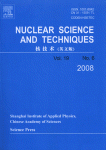
Nuclear Science and Techniques
Transforming Insights into Nuclear ApplicationsNuclear Science and Techniques is a distinguished peer-reviewed journal published by Springer Singapore Pte Ltd, dedicated to advancing the fields of nuclear science and engineering. With an impressive impact factor reflected in its 2023 quartile rankings—Q2 in Nuclear and High Energy Physics and Q1 in Nuclear Energy and Engineering—the journal serves as a vital resource for researchers, professionals, and students alike. Covering a breadth of topics from nuclear physics to energy applications, it offers a platform for innovative research and developments in the nuclear domain. The journal, indexed under ISSN 1001-8042 and E-ISSN 2210-3147, aims to foster scientific exchange and collaboration within the community by publishing high-quality articles that contribute significantly to the field. Committed to maintaining an open-access ethos, it enhances visibility and accessibility of critical knowledge, making it an essential source for current insights and trends in nuclear science.
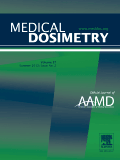
Medical Dosimetry
Transforming Oncology with Innovative Dosimetry SolutionsMedical Dosimetry is a distinguished journal published by Elsevier Science Inc, dedicated to the advancing field of medical dosimetry and its applications within oncology, radiology, and nuclear medicine. With its ISSN 0958-3947 and E-ISSN 1873-4022, this journal serves as a crucial resource for researchers and professionals aiming to enhance their understanding of radiation treatment planning and dosage calculations. Encompassing a comprehensive range of topics from clinical dosimetry to technology assessment, Medical Dosimetry has been disseminating significant findings since its establishment in 1988, contributing to the continuous development of best practices in patient care and safety. The journal currently holds a Q3 ranking in various categories, reflecting its pivotal role in the research community, while not currently offering open access, it remains an essential reference for scholars advancing the techniques utilized in medical imaging and treatment. By fostering a platform for high-quality research, it aims to bridge the gap between theoretical studies and clinical applications, making it a vital addition to any medical library.

EUROPEAN JOURNAL OF RADIOLOGY
Bridging Research and Clinical Excellence in RadiologyThe European Journal of Radiology, published by Elsevier Ireland Ltd, is a premier peer-reviewed journal in the fields of radiology, nuclear medicine, and imaging. Established in 1981, it has carved a significant niche within the academic community, showcasing innovative research that enhances medical imaging practices and improves patient care. With an impressive ranking in the Q1 category for both Medicine (miscellaneous) and Radiology, Nuclear Medicine, and Imaging in 2023, the journal is recognized globally for its commitment to advancing scientific knowledge and improving imaging methodologies. The journal's Scopus ranking of #60/333, placing it in the 82nd percentile, underlines its reputation for high-quality research and scholarly contributions. While traditionally a subscription-based journal, it continually evolves to meet the demands of the academic landscape, aiming to bridge the gap between research and clinical practice. Researchers, healthcare professionals, and students alike can benefit from exploring its extensive archives and current publications, which are curated to foster education and innovation in the medical imaging domain.

JOURNAL OF DIGITAL IMAGING
Elevating Standards in Radiology and Ultrasound TechnologiesJOURNAL OF DIGITAL IMAGING, published by Springer, is a premier journal dedicated to the field of digital imaging, encompassing significant developments in the intersecting disciplines of radiology, computer science applications, and ultrasound technology. With its impressive Q1 ranking in the categories of Radiology, Nuclear Medicine and Imaging, and Radiological and Ultrasound Technology, and a substantial Q2 ranking in Computer Science Applications, this journal is positioned at the forefront of research dissemination in these vital areas. The ISSN 0897-1889 and E-ISSN 1618-727X signify its broad reach and accessibility, while its Scopus rankings demonstrate its robust impact in the academic community, ranked #41/333 in Radiology and earning a notable 87th percentile status. Since its inception in 1988, the journal has served as a vital resource for researchers and professionals seeking to advance their understanding of digital imaging technologies and their applications. Although it does not currently offer open access options, it continues to foster scholarly dialogue and innovation, making it an indispensable platform for those committed to excellence in imaging science and technology.

Physical and Engineering Sciences in Medicine
Engineering Progress in Biomedical SciencePhysical and Engineering Sciences in Medicine is an esteemed peer-reviewed journal published by SPRINGER, dedicated to advancing the interdisciplinary fields of biomedical engineering and biophysics. With an ISSN of 2662-4729 and an E-ISSN of 2662-4737, this journal has carved a niche for itself since its inception in 2020. Situated in the Netherlands, it serves as a global platform for innovative research and developments that bridge the physical sciences and engineering with medical applications. The journal boasts a commendable range of quartile categorizations, highlighting its impact in various sectors including Instrumentation (Q1), Radiology (Q2), and Biotechnology (Q2). Its Scopus rankings further emphasize its relevance and quality, placing it in the top 15% in several categories. Being an Open Access title, it promotes the dissemination of knowledge, ensuring that vital research is accessible to all, thereby fostering collaboration among researchers, professionals, and students alike. The journal's objectives include promoting cutting-edge research, enhancing biomedical technology, and addressing complex health challenges through innovative engineering solutions, establishing it as a vital resource in the scientific community.
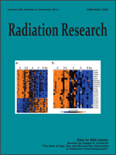
RADIATION RESEARCH
Elevating the discourse in biophysics and radiology.RADIATION RESEARCH is a prestigious journal published by the RADIATION RESEARCH SOC that serves as a vital resource for professionals and researchers in the fields of biophysics, radiation science, and radiology. Established in 1954, this journal has consistently advanced the study of radiation's effects on health and the environment, bridging fundamental and applied research. It boasts an impressive impact factor reflected in its quartile rankings, including Q2 in Biophysics and Q1 in Radiation, making it a highly regarded publication within its discipline. Researchers will find valuable insights through rigorous peer-reviewed articles that explore innovative methodologies and findings related to radiation exposure, imaging technologies, and the biological consequences of radiation. Although the journal does not currently offer open access, it remains a vital reference for academia and industry, fostering a deeper understanding of radiation sciences and their implications for future research and public health.
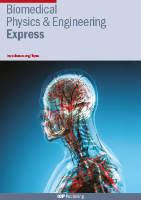
Biomedical Physics & Engineering Express
Connecting Biomedical Physics with Engineering ExcellenceBiomedical Physics & Engineering Express, published by IOP Publishing Ltd, serves as a dynamic platform for the dissemination of groundbreaking research in the interdisciplinary domains of biomedical physics, engineering, and related fields. With a focus on innovative solutions for healthcare challenges, the journal extends its reach to a global audience, providing valuable insights that influence both academic research and practical applications. Operating under an open-access format, this journal ensures that vital scientific discoveries are readily available to researchers, professionals, and students alike. Ranking within the Q3 and Q4 quartiles across various categories—including Bioengineering and Biomedical Engineering—indicates its emerging influence in the scientific community since its inception in 2015. With an increasing footprint in Scopus rankings and a commitment to advancing knowledge in subfields such as biophysics and health informatics, Biomedical Physics & Engineering Express plays a crucial role in shaping future innovations in healthcare technology and patient care.

Radiation Oncology
Transforming cancer treatment with cutting-edge radiation studies.Radiation Oncology is a premier scholarly journal published by BMC, dedicated to advancing the field of oncology through innovative research and comprehensive reviews since its inception in 2005. With its Open Access model, the journal ensures that the latest findings in radiotherapy and cancer treatment are accessible to a global audience, fostering collaboration and knowledge sharing among researchers, clinicians, and healthcare professionals. The journal has garnered an impressive reputation with prestigious rankings, achieving Q1 status in Radiology, Nuclear Medicine and Imaging and Q2 in Oncology as of 2023, reflecting its significant impact on the scientific community. In the Scopus rankings, it stands proud at Rank #61 in Radiology, Nuclear Medicine and Imaging, placing it in the top 81st percentile, and Rank #112 in Oncology at the 72nd percentile. With a converged publication plan extending through 2024, Radiation Oncology remains a vital resource for those dedicated to enhancing cancer treatment methodologies and outcomes.

Japanese Journal of Radiology
Unveiling the Future of Radiology, One Article at a TimeThe Japanese Journal of Radiology, published by SPRINGER, serves as a premier platform for disseminating cutting-edge research and clinical advancements in the fields of radiology, nuclear medicine, and imaging. With an ISSN of 1867-1071 and E-ISSN 1867-108X, this journal has established itself as a vital resource for practitioners, researchers, and students alike. Renowned for its high-quality peer-reviewed articles, it currently enjoys a respectable impact factor within the Q2 category of Scopus rankings, placing it in the 69th percentile among 333 journals in its field. The journal has seen consistent convergence of research from 2009 to 2024, further underscoring its commitment to advancing the understanding of radiological practices. Importantly, the journal offers Open Access options to facilitate widespread dissemination of knowledge, ensuring that vital research reaches its audience without barriers. Addressed in Japan, the Japanese Journal of Radiology plays a critical role in enhancing the global discourse on medical imaging, making it an essential resource for anyone engaged in this dynamic field.